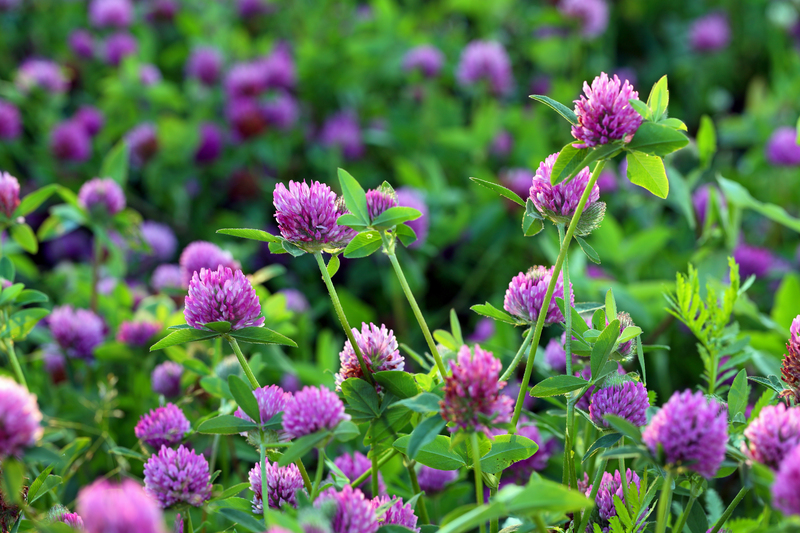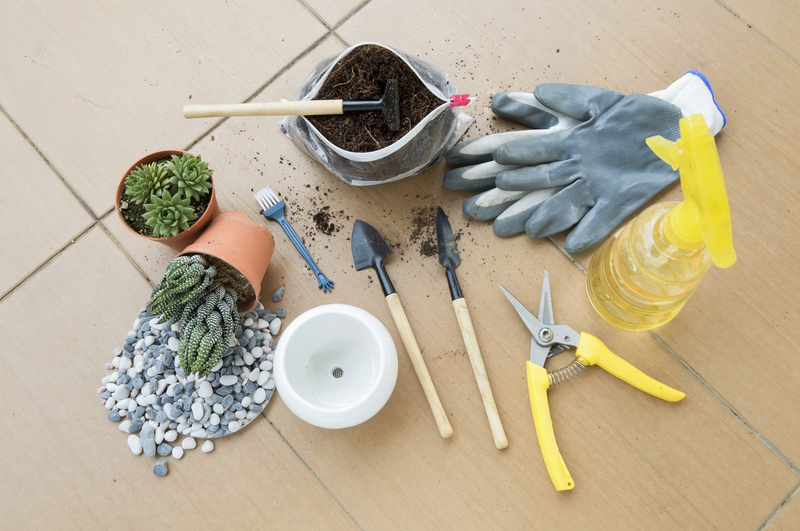Gardeners' Choice: 3 Top Tips for Effective Weed Control
Posted on 24/09/2025
Gardeners' Choice: 3 Top Tips for Effective Weed Control
If you are passionate about gardening, weed control is likely at the top of your to-do list. Every gardener dreams of a pristine, flourishing outdoor space, but pesky weeds can quickly undermine even the best-laid plans. Fortunately, mastering the art of weed management is within reach! In this article, we'll explore top-rated weed prevention methods and proven strategies for weed management that will help keep your garden vibrant and weed-free.
Understanding the Importance of Weed Management
Weeds are more than just an eyesore in your flowerbeds or vegetable plots. They compete for essential nutrients, water, and sunlight, robbing your plants of the resources they need to thrive. Additionally, some weeds can harbor pests or diseases, increasing the risk of problems in your garden. Here's why effective weed control is so crucial:
- Enhances Plant Health: By removing the competition, your flowers, vegetables, or shrubs grow stronger and healthier.
- Improves Garden Appearance: A weed-free garden is simply more beautiful and inviting.
- Prevents Weed Spreading: Diligent weed suppression keeps invasive species from taking over.
- Reduces Pests and Diseases: Many weeds shelter insects and pathogens that could harm your plants.
Now, let's dive into the top 3 tips for effective weed control recommended by experienced gardeners!

1. Mulching Magic: An Organic Barrier Against Weeds
Among the most recommended techniques for weed prevention is mulching. This simple practice involves spreading natural or synthetic materials over your garden soil, forming a protective shield that inhibits weed growth.
How Mulching Controls Weeds
- Blocks Sunlight: Most weed seeds require sunlight to germinate. Mulch covers the soil and deprives weeds of this essential element.
- Retains Soil Moisture: Mulch conserves water, keeping your plants hydrated and reducing soil disturbance from weeding or watering.
- Physical Barrier: It physically prevents weeds from emerging through compacted layers.
- Improves Soil Quality: Organic mulches decompose over time, enriching the earth and encouraging healthy plant roots.
Types of Mulch for Optimal Weed Suppression
- Organic Mulches: Straw, shredded leaves, grass clippings, compost, bark chips, or wood shavings.
- Synthetic Mulches: Landscape fabric, plastic sheeting, or weed mats for long-term coverage.
How to Apply: Spread a 5-10 cm (2-4 inches) thick layer of mulch around your plants, avoiding direct contact with stems or trunks. Replenish regularly to maintain effectiveness, especially after heavy rain or decomposition.
Bonus tip: Combine mulching with pre-emergent weed control products for even greater prevention, especially in larger or more persistent problem areas.
2. Cultivation and Hand Weeding: Old-Fashioned, Yet Unbeatable
While mulching is excellent for weed prevention, persistent weeds sometimes need a hands-on approach. Gardeners have relied on cultivation and hand weeding for generations, and modern gardeners still swear by these trusty techniques for organic weed control.
Effective Hand Weeding Techniques
- Weed Early, Weed Often: Young weeds are easier to remove, so don't procrastinate. Aim to weed at least once per week during the growing season.
- After Rain or Watering: Soil is looser and roots release more easily after rain or thorough watering, minimizing plant disturbance.
- Use Proper Tools: Equip yourself with a hand fork, hoe, or specialized weeding tool to help loosen soil and extract roots completely.
- Remove the Entire Root: Many weeds, such as dandelions, regrow if even a small root fragment remains. Take care to extract the full taproot.
- Dispose Thoroughly: Don't leave pulled weeds on the soil surface, as some can re-root. Compost only weed-free material, or destroy them.
Cultivation for Weed Management
- Shallow Hoeing: Use a Dutch hoe to sever weed seedlings just below the soil surface. This method is quick and limits soil disturbance.
- Avoid Deep Tilling: Deep turning of soil can bring buried weed seeds to the surface, where they may germinate. Stick to shallow cultivation for routine maintenance.
This approach is not just effective but environmentally friendly, requiring no chemicals or synthetic inputs and fostering a healthier ecosystem in your garden beds.
3. Smart Planting and Dense Ground Coverage
One of the cleverest weed prevention strategies according to expert gardeners is simply crowding weeds out. Strategic planting and choosing robust ground covers will transform your garden into a lush and healthy, weed-resistant space.
Diversify and Densify Your Plant Beds
- Fill Bare Spaces: Weeds thrive where there's no competition. Fill every gap with annuals, perennials, or ground covers to shades and crowd out weeds.
- Choose Vigorous Ground Covers: Opt for fast-growing, low-maintenance plants such as creeping thyme, ajuga, sedum, or sweet woodruff--these create a living mulch.
- Companion Planting: Plant compatible flowers and vegetables together to create dense foliage that discourages unwanted growth.
- Stagger Plant Heights: Layering tall, medium, and low-growing species further shades soil.
Benefits of Dense Planting for Weed Control
Dense planting leaves less light and space for weeds, which naturally inhibits germination. Ground covers choke out intruders and boost the aesthetic, ecological, and functional value of your garden.
Extra Advice: Integrated Approaches to Weed Suppression
The best gardens employ a blend of approaches to weed management. Here's how you can integrate strategies for maximum weed reduction and garden health:
- Rotate Techniques: Combine mulching, hand weeding, and dense planting for overlapping control.
- Use Barriers for Pathways: In high-traffic areas, lay down weed fabric or pavers to keep weeds at bay.
- Apply Pre-emergent Herbicides Cautiously: In suitable settings (such as non-edible landscapes), modern pre-emergents suppress weed seed germination without harming established plants. Read instructions carefully to ensure safety and efficacy.
- Monitor Regularly: Walk your garden weekly, removing stray weeds promptly to maintain control.
When to Consider Mulch vs. Manual vs. Chemical Controls
Organic mulches and hand weeding are ideal for flowerbeds, vegetable gardens, and eco-friendly landscapes. Chemical controls--including targeted spot treatments--are best reserved for invasive perennials that can't be managed organically, or in non-plant areas such as patios or driveways.

Frequently Asked Questions About Weed Control
How often should I mulch for best weed prevention?
Generally, mulching once each spring is sufficient, but inspect your beds regularly. Reapply mulch as it becomes thin, compacted, or decomposed, typically every 1-2 years.
Are organic weed control methods as effective as chemicals?
Absolutely. With consistency, organic methods like mulching, hand weeding, and dense planting offer lasting results and are better for your soil and the broader environment.
What is the best way to prevent weeds in walkways and patios?
Install landscape fabric, paving stones, or gravel--all act as physical shields against weeds. For stubborn spots, pick or treat with a spot herbicide.
Conclusion: Enjoy a Weed-Free, Beautiful Garden
Effective weed control doesn't have to be a chore. With these three top tips--mulching, manual removal, and smart planting--you'll transform your garden into a healthy, low-maintenance paradise. The secret lies in consistent attention and the integration of multiple weed-fighting strategies. Every gardener deserves a thriving, weed-resistant landscape. So arm yourself with these expert-approved techniques and enjoy the rewards of a vibrant, lush, and weed-free garden all season long!
For further advice on weed management tips and garden care solutions, bookmark this page and stay tuned for more essential gardening insights!

